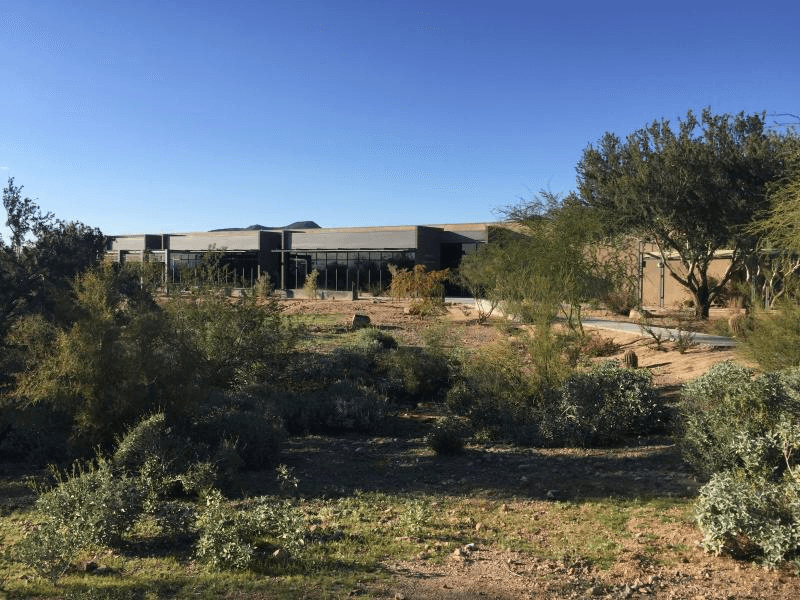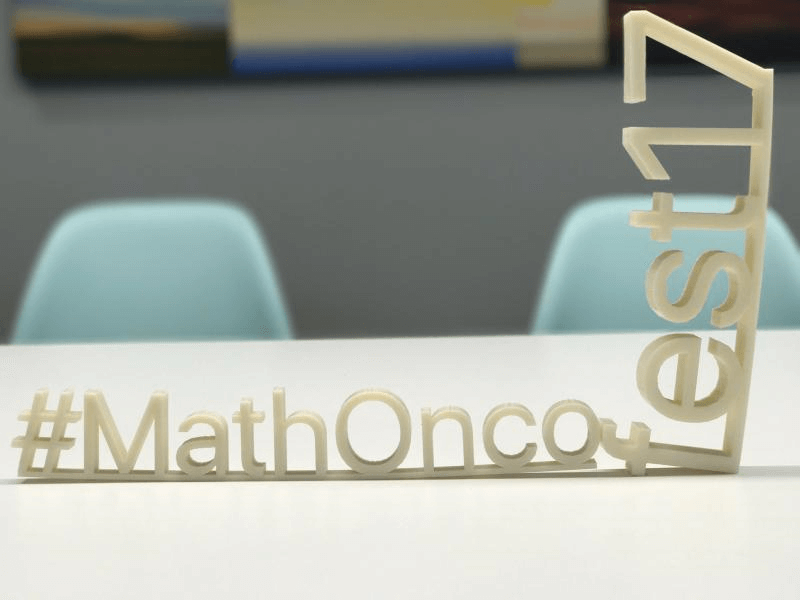Posted: March 2, 2017, 12:21pm
Live, from the beautiful desert landscape of Phoenix, Arizona, we meet a team of 30 cancer researchers who descend on the campus of Mayo Clinic to discuss the cutting-edge ideas, data, and research in computational and math modeling in oncology.

The campus of the Mayo Medical School in Scottsdale, AZ.
National Cancer Institute
This particular conference happens to be a National Cancer Institue (NCI) meeting. This was a small meeting with only about 25 researchers from around the country. The meeting was focused on math oncology: building math and computational models to better understand, predict, and treat cancer. The week began on Sunday evening with an informal poster session in the “collaboratorium” of the Mayo Clinic’s neurosurgery department. The math oncology group is headed by Kristin Swanson, who studies patient-specific models in glioblastoma (among many other topics in modeling of cancer), and she served as our host for the week. I had the opportunity to discuss some of our work in game theory models of chemotherapy scheduling in the form of a poster presentation. The next day my advisor gave a full presentation highlighting the utility of our models in describing implications of various treatment schedules when administered to patients with varied tumor growth rates.
What I Learned
The highlight of the week for me was hearing so many talks focus on the evolutionary and ecological nature of cancer. Implications abound for the treatment of such a disease and the modeling community really understands this. Ecology is the study of competing populations, and cancer is generally a very heterogeneous disease. Evolution is the study of heredity, which is the mechanism by which cancer passes down (and often increases) this heterogeneity through subsequent generations of the cells within a cancerous tumor. Many are studying this heterogeneity by looking at genetics data (the actual units of information that are passed down during each birth process. But others are starting to analyze how this genetic information is translated into behaviors (usually referred to as phenotypic information, whereby genetics data can be translated into course-grained subpopulations of similar subclones).
The main point I took away from the conference is that it is often the smallest competitors within the diverse community of players in a tumor that are the most dangerous. What do I mean by that? We often start treatment by attacking the largest population of cells with a drug that kills those cells effectively. But resistance, a huge problem in the treatment of cancer, will generally arise out of the ashes of those treated cells that results in a larger population of resistant cells. That resistant population begins very small, and it ends as the main problem for so many patients.
Luckily, these are all problems that lead to questions that are well-suited to be solved in an evo-eco context. That’s where us modellers come in. How exciting to be part of this community of researchers trying to ask and answer the tough questions that cancer forces us to ponder!
If you’re interested in seeing some more of the exciting research coming out of this week’s conference, I encourage you to follow the hashtag #mathoncofest2017 – it’s very well documented there!

A 3-d rendering of the conference hashtag. PC: Kristen Swanson.
Published on July 26th, 2017
Last updated on August 10th, 2017

